Sultan Chicken: All You Need To Know
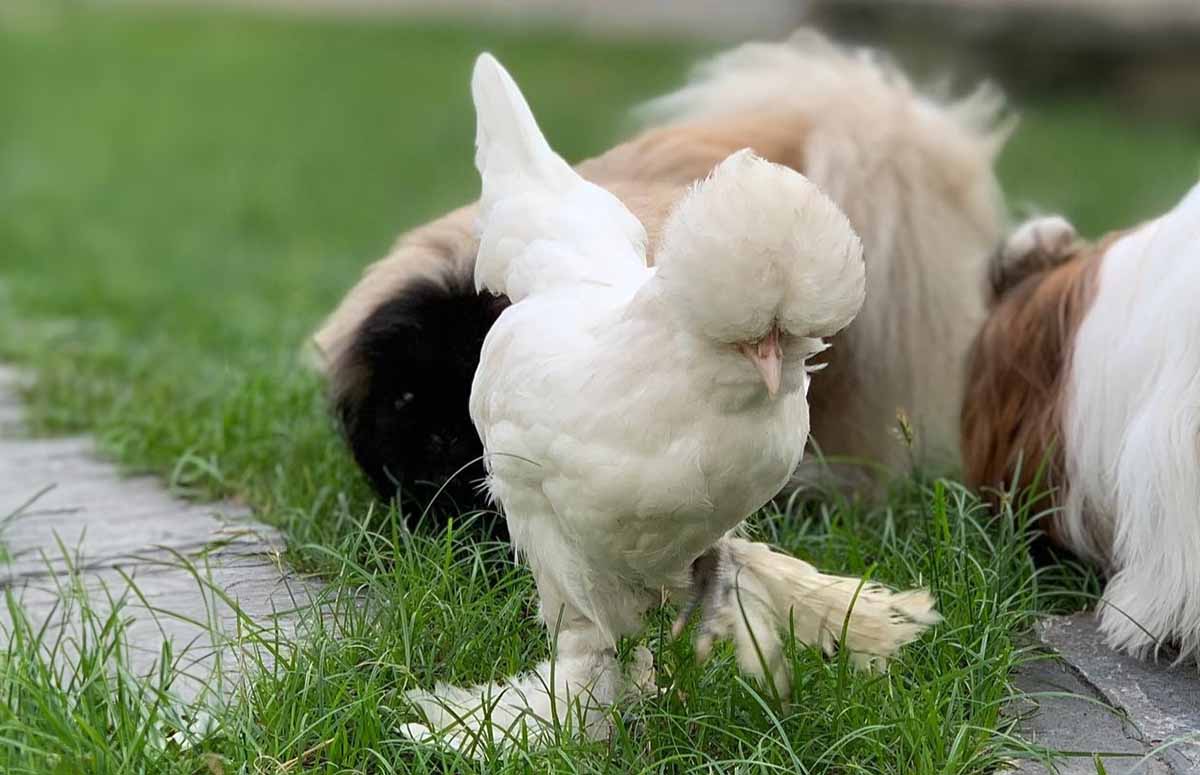
Sultan chickens are as royal and dignified as their name suggests. This is an old breed too, and it has quite a storied history. More importantly, it’s a breed with many unique characteristics and needs that you should be aware of if you’re planning on adding one or more to your flock.
So, here’s all you need to know about the Sultan chicken.
- Sultan hens lay between 50 and 100 eggs yearly
- Ancient Turkish breed
- Active temperament but friendly
- Mainly kept as an ornamental bird
| Eggs | Between 50-100 eggs yearly |
| Egg Color | White |
| Egg Size | Small |
| Weight | 4 lbs – 6 lbs |
| Hardiness | Prefers warmth |
| Temperament | Active and friendly |
| Beginner-friendly | No |
| Color | White |
Characteristics
Sultan chickens are characterized as a “large breed” but they are the smallest of the large breeds, as Sultan roosters rarely go above 6 pounds (2.7 kg) and hens tend to stay around 4 pounds (1.8 kg). This really puts them more in line with medium-sized chickens rather than most larger ones.
Lookswise, these chickens are incredibly beautiful, which is why they are such great ornamental birds. For starters, purebred Sultan chickens come in just one color, and that’s pure white, covering their entire plumage – from the top of their combs to the tip of their tails and the entirety of their feet.
But of course, other colors are also available; these are only not officially recognized.
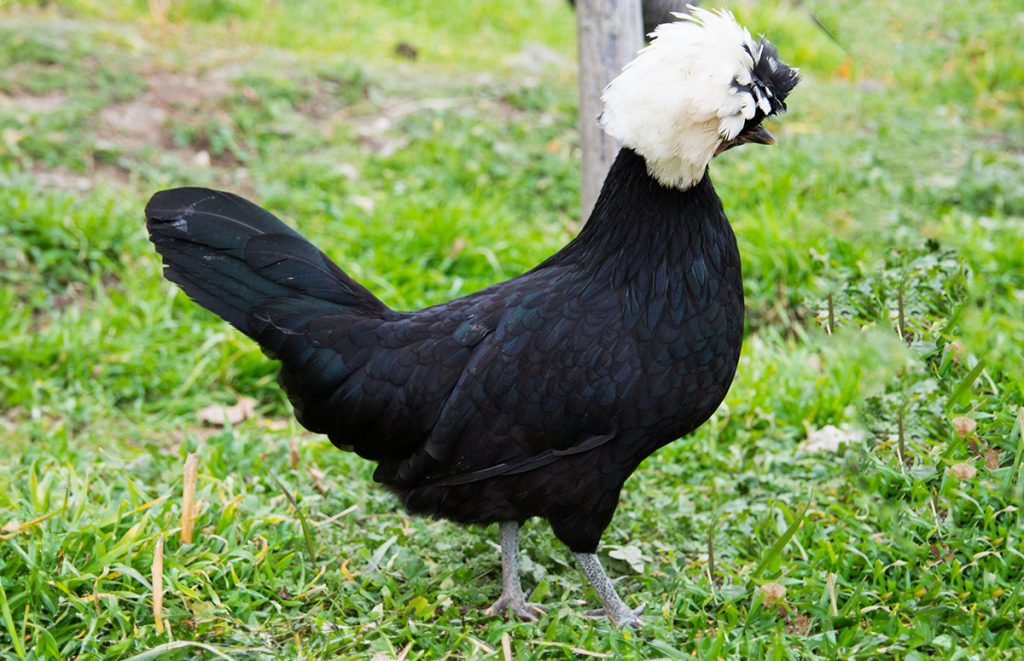
This bright white color has its obvious disadvantages of course – namely that these birds don’t look nearly as good when they get dirty. It also makes them even easier for predators to spot from afar.
The unique features don’t stop here, however. Sultan chickens are also notable for their V-shaped comb, extra large nostrils, their muffs, beard, and crest, and their pale beaks.
Sultan chickens have five toes on each feathered foot – something that’s also seen in Silkies – and they have vulture hooks, reddish-bay eyes, and they carry their wings unusually low, covering much of the thighs and the upper hocks.
Individually, many of these characteristics can be seen in other breeds too. What’s noteworthy here, however, is that few other chickens can boast of having that many unique characteristics in the same breed.
Breed Profile
Sultan chickens come from Turkey and the Ottoman Empire before it. There, these chickens were bred exclusively as ornamental birds and were called “Serai Täook” or “Fowl of the Sultan’s palace”. Other people owned such birds too, of course, not just the Empire’s Sultan. Yet, this wasn’t a “commoner’s bird” either, as most ordinary people didn’t have much use for ornamental fowl birds.
This puts the known origin date of the Sultan chicken somewhere in the 14th century as that’s when the Ottoman Empire took Constantinople and entered Europe. What the exact history of these birds is before that isn’t known.
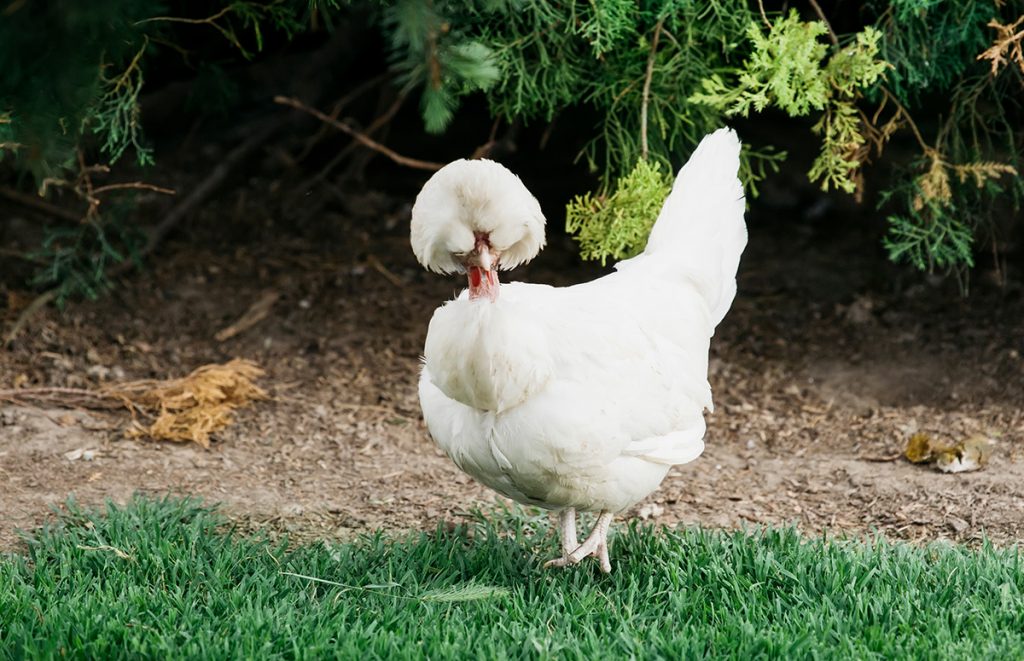
What’s more, for about half a millennium between the 14th and 19th centuries, the Serai Täook birds had remained the privy of the Ottoman Empire. It wasn’t until 1854 that they made it into England thanks to Elizabeth Watts of Hampstead who had received a few Sultan chickens from a friend of hers living in Constantinople.
As the editor of the Poultry Chronicle newspaper in London, Hampstead wrote that the birds looked dreadfully when she first saw them – because of the long journey, their otherwise white plumage was so dirty and matted that they appeared worse than the most unkempt feral chickens out there.
Once they molted their ruined feathers, however, their new pure white plumage quickly showcased why these were the birds of the Sultan’s serai.
After that, the Sultan chicken made it into America in 1867 and people on both sides of the Atlantic started noticing not just how beautiful but also how tame and content these birds were. Sultan chickens made it into the first American Poultry Association Standard of Perfection (or Standard of Excellence as it was called then) in 1874.
Early 19th and 20th century breeders outside of Turkey also made some crosses between the Sultan chicken and Polish chickens which led to Black Sultan chickens and Blue Sultan chickens. These are often not recognized as “purebred”, however, but are a well-known and accepted cross. Both black and blue Sultan chickens are usually monochromatic but can sometimes be a mix of black & white or blue & white or have white feathers on the head and fully black or blue bodies.
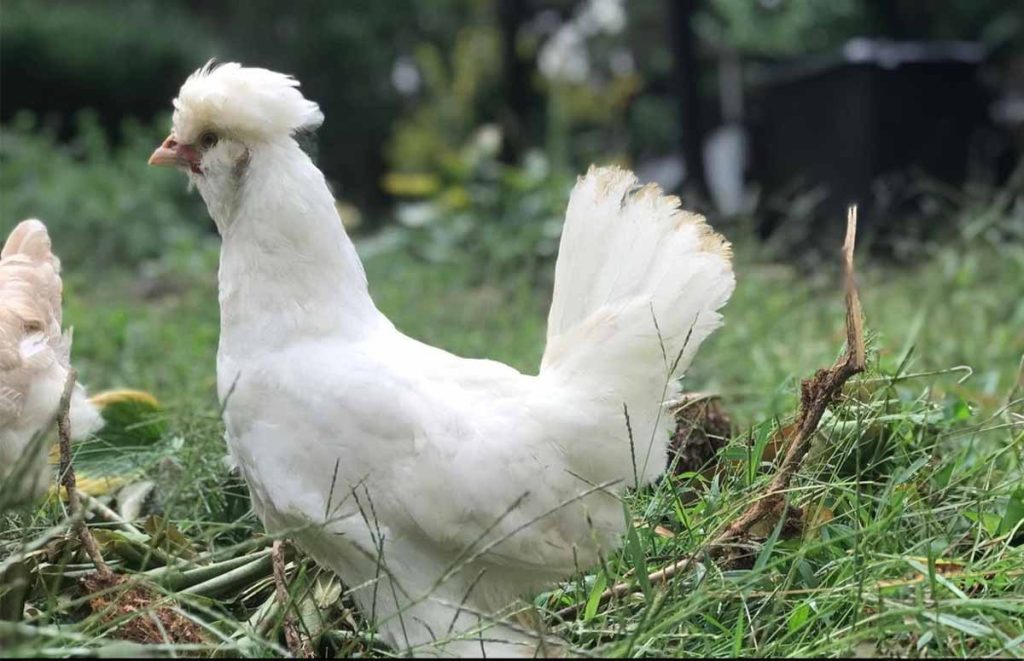
There’s also a bantam version of the Sultan chicken that’s about three times smaller than the original. Male bantams weigh about 740 grams, while females are around 625 grams.
Unfortunately, while the story of the Sultan chicken outside of Turkey started promisingly, these birds had a tough road ahead of them during the 20th century. As the poultry industry grew and people focused on maximizing both the egg-laying and table potential of poultry birds, ornamental chickens like the Serai Täook fell to the wayside.
The breed almost went extinct during the 1930s and remains quite rare today as it’s mostly bred and kept for competitive showing or by backyard chicken keepers who see their birds as pets more so than as dedicated egg layers.
Egg and Meat Production
Laying eggs isn’t really “a strength” of the Sultan chicken as these birds haven’t been bred for that purpose in centuries. Even under the best conditions, a Sultan chicken will lay between 50 and 100 eggs a year but no more than that.
These eggs are white and pretty small. Sultan hens aren’t particularly broody either. In short, this isn’t a bird you’d want if you prioritize the egg-laying potential of your backyard poultry.
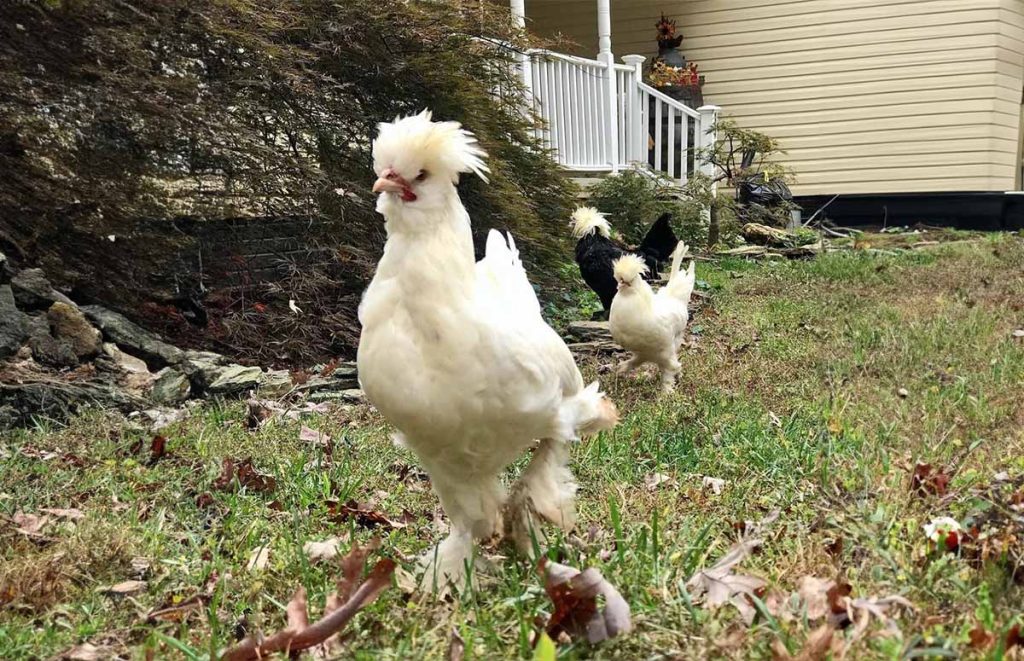
As they lean more toward the medium-size range, Sultan chickens aren’t the best table bird. They are still decent in that regard, however, and were once considered quite good table birds as their breasts are large, fleshy, and delicate. There are larger and more dedicated table birds nowadays, however, so that’s not seen as the primary reason to get Sultan chickens.
Personality
The other huge plus of this breed, besides their incredible looks, is their personality. Sultan chickens are social, friendly, and well-mannered. Even the roosters aren’t typically ones to bully other birds in your flock, and they can get along swimmingly with other similarly-tempered chickens such as the Faverolles.
This isn’t to say that Sultan chickens are overly calm and inactive, however. Instead, they are quite active and investigative. They are also pretty chatty without being too loud, and they like exploring around.
They fly too but tolerate confinement better than most flighty chicken breeds and they can be happy in smaller gardens. They are also famous for not really damaging grass and plantings as much as other birds which is great for backyard chicken keepers.
Do keep in mind that these birds aren’t cold-tolerant, however. Both cold and predation can be big problems for Sultan chickens which is something to always keep in mind.
Another reason why they aren’t often recommended for beginners is that their mild temperament can make them targets for bullying by other more assertive chicken breeds. So, it takes an experienced chicken keeper to adequately keep Sultan chickens with most other breeds unless they share these birds’ friendly demeanor.
Summary
In short, Sultan chickens make for excellent pet birds even if you don’t care about competitive bird shows and as long as you can give them the care they need. They are absolutely gorgeous and quite friendly but they can be the subject of predation and bullying, and they don’t lay that many eggs.
However, if you are a backyard chicken keeper and are excited to add a few beautiful pets to your flock, the Sultan breed can be an excellent choice.
To learn more about chicken breeds, check out our ‘Chicken Breeds Page‘ to see every specific breed we address. Or go to our listicle breed summary on ‘The Classroom‘, or, if you’re unsure where to start, take a look at our ‘Chicken Breeds: Ultimate Beginners Guide‘.
Credits Featured Image: @lifeofalittlepekingese (IG)






















